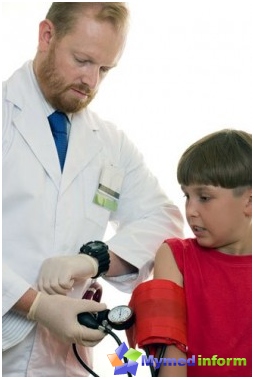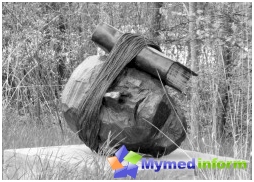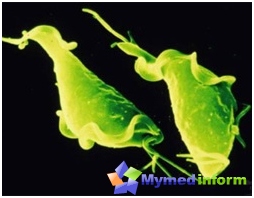In adolescence, this disease is most often diagnosed only because it is during this period that the development of the neuroendocrine system from the physical formation of a person is observed. There may be acute and chronic infections, general intricence of the body, frequent lack of sleep, overwork, violation of the correct nutrition, stress, frequent change of sexual partners, and physical overloads. Often the reason for the appearance of this disorder is heredity.
Why the disease occurs?

The development of this pathology can cause various reasons. Most often they include damage to the nervous system, vessels and hearts. Cause the appearance of ailment, as noted above, can also genetic predisposition, stress, mental injuries, lack of sleep and overwork. Sometimes this disease arises as a result of transferred chronic and acute infections. Women have ailment of such a kind formed during Klimaksa, during pregnancy, after Aborto and in violation of the ovarian function. The reason for the appearance of neurocirculatory dystonia can also be excessive physical stress.
Symptoms and signs

The diagnosis of neurocirculatory dystonia is complicated by the fact that it is characterized by many different symptoms, which are also in other diseases. The main symptoms for which the doctor pays attention to the patient's survey, are a rapid heartbeat, a sense of air shortness, painful sensations in the heart of the heart, ripple in the neck area, weakness, increased fatigue, frequent headaches, sleep disorder, irritability, dizziness, and also Feeling cold and wet hands and legs.
Often, disorder has a sufficiently strong connection with the periods of restructuring of the hormonal system or with stress. Most patients are characterized by unstable heart rhythm. At the same time, a rapid heartbeat may appear absolutely no obvious cause. In addition, neurocirculatory dystonia is detected by impaired respiratory rhythm, blood pressure instability and with high sensitivity in the heart.
To diagnose neurocirculatory dystonia, an ECG is often used, the results of which with the existing disorder can show Tachycardia, arrhythmia, Extrasyistol and migration of the rhythm driver. Great informativeness To determine this ailment carries an ECG with a load in which the patient must first make quick breaths and exhalations for about half an hour, and then the study itself is carried out. At the same time, the results of the ECG with the load compare with the results of the study without load. The sample is considered positive if the comparison showed that the pulse under load frequent by 50-100% and there are negative teeth on the chart. In this case, the diagnosis is confirmed.
What and how to treat pathology?

Treatment of neurocirculatory dystonia implies some non-drug events that are aimed at increasing the adaptability of the human body to changing conditions. These include hardening, psychotherapy, sports, as well as observance of labor and recreation.
It is important to train the regulation systems of vegetative functions. For this useful different techniques Physiotherapy. For example, patients showing therapeutic baths, Electrophoresis, Electroson and reflexotherapy. These procedures are carried out in many sanatoriums. Therefore, people with such disorder is useful to undergo sanatorium-resort treatment, where the treatment of physical education procedures is also possible. With severe irritability, the patients show sedatives.
To eliminate tachycardia and pressure surges, patients are often prescribed ?-adrenoblocators. More accepted drugs to improve muscle metabolism.
To normalize the tone of vessels and psycho-emotional status, resonant homeopathy. Improve the patient's condition and eliminate the exacerbation is possible in just 4-10 visits to homeopath.
To restore the balance and impaired processes of neuro-humoral regulation in the body, the methods of classical homeopathy are carried out. At the same time, drugs are usually selected individually, according to Biorithmov, habits in food and personal characteristics of a person. For a persistent effect, it is necessary to adhere to the strict treatment regimen for six months. To restore the tone of blood vessels and nervous regulation, according to our site, it shows well the needleflexotherapy. Treatments of treatment in this case are selected individually.









